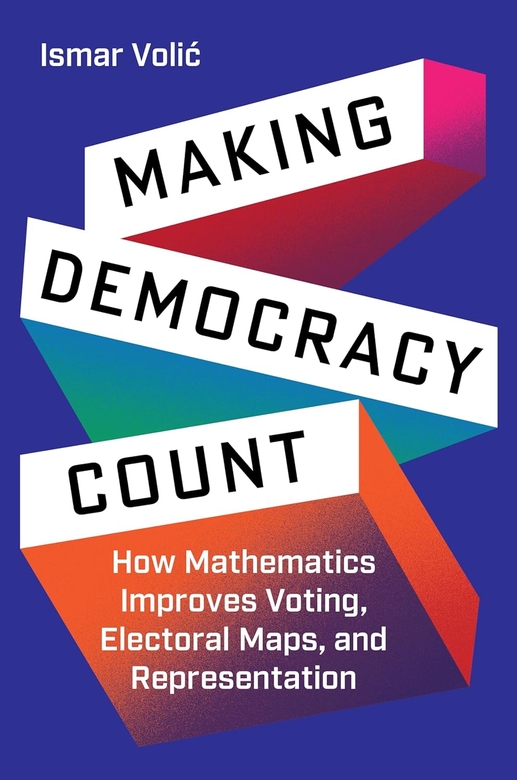 Pulling back the curtain on the flawed formulas of the United States government, Making Democracy Count: How Mathematics Improves Voting, Electoral Maps, and Representation by Ismar Volić is a scathing and scientific review of a faltering democracy, and a guidebook for how to change it.
Pulling back the curtain on the flawed formulas of the United States government, Making Democracy Count: How Mathematics Improves Voting, Electoral Maps, and Representation by Ismar Volić is a scathing and scientific review of a faltering democracy, and a guidebook for how to change it.
With the US political establishment seeming less than functional, a book like this provides needed insight on what can only be described as a convoluted and problematic system. While it is true that mathematics undergirds the voting and governing processes of the United States, the numbers don’t add up for many American voters, let alone international observers trying to muddle through eyebrow-raising issues like the Electoral College, the two-party system, supermajorities, gerrymandering, and unequal representation in the country’s two legislative bodies.
Patiently exploring the nuanced role of mathematics in democratic processes, this thoroughly researched book delves into the philosophy of math, the history of numbers, as well as sociology, statistics, anthropology, psychology, game theory, and more, unveiling problems at the heart of the American system, such as the size of Congress and the Electoral College, as well as issues that are less visible in the public discourse. Volić digs deep into notable elections from the past two decades, showing how they exemplify systemic problems in American politics that require redress.
For election hounds and math lovers, this book is an ideal combination of theory and practical results, highlighting political elements that work equitably, as well as downright ridiculous loopholes and mathematical paradoxes that have somehow become acceptable. What sets this book apart from other frustrated screeds about US elections is the solutions the author offers; in his view, math is both the villain and hero of this story, and by implementing his suggested tweaks and mathematical overhauls, America could actually establish the equitable, representative, and logic-based democracy it has falsely imagined itself to have.
Importantly, Volić doesn’t approach these obvious electoral problems with a partisan lens, nor does he blame a specific party or belief system for worsening or taking advantage of these numerical stumbling blocks. As he states early on, math is bipartisan, and can work for or against either party, based on the broken tools available to voters, lawmakers, and political leaders. The author doesn’t veer into culture wars, religion, economics, or lifestyle politics, instead keeping the focus on hard facts and data that can be quantitatively measured. Given the vast political divide that currently exists in America, this impartiality is appreciated, and increases the potential draw of this revelatory read.
That said, the author’s thesis argues for the power of math to increase fair representation and inclusivity, and to remove impediments to voting and discrimination within the process, which could be seen as a progressive or liberal talking point, but that’s an ideological problem for a different book to unravel. For any reader, the prose is sharply academic yet conversational, making the subjects easily accessible without scaring away readers who may blanch at the sight of equations and calculations on a page. Through the use of relatable metaphors and numerical allegories, from pizza toppings, family quarrels, and MVP awards to specific electoral results from critical races in recent history, the book manages to be both complex and easy to digest.
Regardless of ideological alignment or mathematical savvy, this is a timely and compelling work of political science, which will make readers think differently about the core machinations of the American government.
Available At


















Leave A Comment